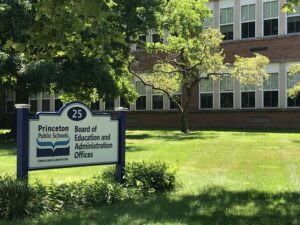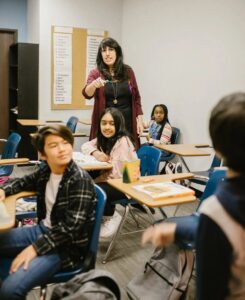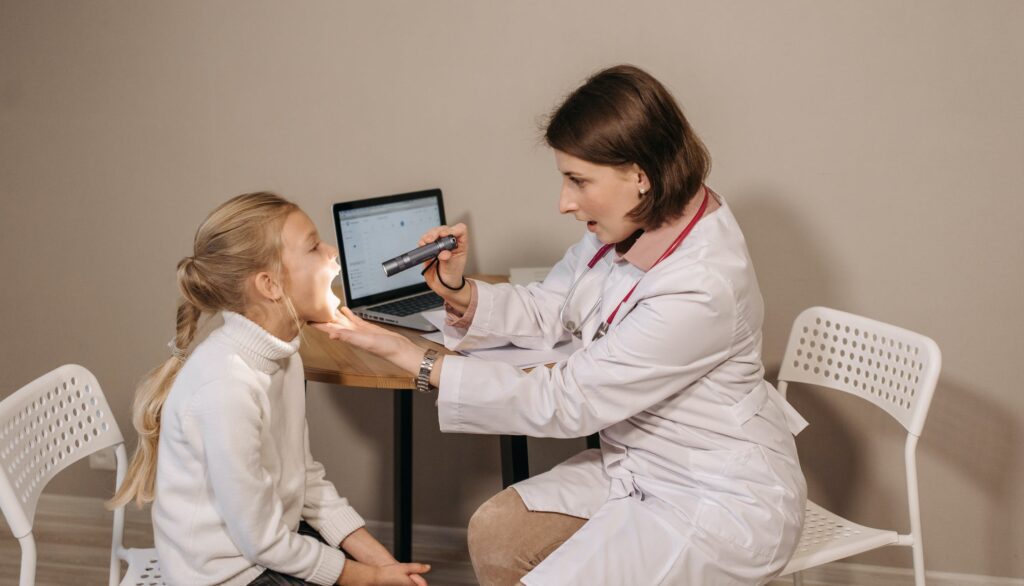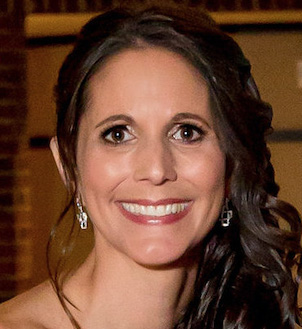 When looking to move to a new town, people with children often look at the school system. How highly is it ranked, what is the graduation rate and more? For Princeton, a repeatedly high ranking as one of the best public school districts has made it an attraction to many. The 2022 rankings by Niche.com – a company that analyzes data to provide comprehensive rankings, places Princeton Public Schools (PPS) as the #3 best school district in NJ (with West Windsor- Plainsboro Regional School district right behind at #4) and the 30th best school district in America. Additionally, US News ranked 17,857 high schools nationwide, placing Princeton High School in the top 4% of schools across the US.
When looking to move to a new town, people with children often look at the school system. How highly is it ranked, what is the graduation rate and more? For Princeton, a repeatedly high ranking as one of the best public school districts has made it an attraction to many. The 2022 rankings by Niche.com – a company that analyzes data to provide comprehensive rankings, places Princeton Public Schools (PPS) as the #3 best school district in NJ (with West Windsor- Plainsboro Regional School district right behind at #4) and the 30th best school district in America. Additionally, US News ranked 17,857 high schools nationwide, placing Princeton High School in the top 4% of schools across the US.
“Princeton Public Schools is both a very good school district and a district working hard to be even better,” explains Kathleen Foster, Interim PPS Superintendent for Curriculum. “In the pre-K classrooms, our youngest learners begin to develop self-regulation skills and autonomy through play. That sense of play continues through the grade levels as staff create rich opportunities for students to imagine, problem solve and explore. As students move through the middle school, PPS continues to offer excellent academics combined with opportunities to participate in athletics, the arts, and a wide variety of clubs and extra-curricular activities. Providing expanded opportunities for all students to excel is part of the PPS mission. By high school, thanks to a strong foundation in middle school, many students are ready to take on challenges that include independent research projects, accelerated and AP courses, and a wide variety of extra curriculars.”
Many of these ideals are what one looks for when defining a school district as one of the best. Niche.com helps people take a closer look at the varying qualities of schools by breaking its analysis down into 6 categories: academics, college prep, diversity, teachers, clubs/activities and health and safety. In a district with 3,842 students, PPS received an A+ in each category.
 Academics are a top priority for many in this Ivy League college town, where more than 87% of Princeton High School (PHS) 2020 graduates enrolled in college. 348 teachers work throughout the district, at an 11:1 student/teacher ratio, to help the students get there.
Academics are a top priority for many in this Ivy League college town, where more than 87% of Princeton High School (PHS) 2020 graduates enrolled in college. 348 teachers work throughout the district, at an 11:1 student/teacher ratio, to help the students get there.
“What I have seen through my child is that there is a high quality of academic excellence expected at PPS schools. The teachers, through elementary and middle school, make sure the fundamentals are mastered, which allows the child to build on these, grow, and achieve in broader areas of study,” shares a current Princeton Middle School Parent.
A measure of how students are learning is calculated by the state each year. Due to the lack of standardized testing for the prior two school years, the latest data is from the 2018-2019 school year, which demonstrates the PPS students exceeded the standard.
The state average SAT score is a 1010, whereas PHS students score an average of 1334. Additionally, to prepare for college, nearly 75% of PHS students take an AP (advanced placement) course and more than 50% of those students score a 3 or better on those AP exams.
“I’ve been hugely impressed by the Princeton Public Schools ever since my oldest, now a freshman at PHS, started as a kindergartener at Littlebrook (Elementary),” notes Jane Manners, parent to current 9th, 5th and 2nd graders throughout PPS. “In particular, my husband and I have been struck by the district’s small class sizes, the caring and dedicated teachers and administrators, the abundance of resources, and — in recent years in particular — the district’s sustained efforts to ensure that its opportunities are available to all children equally.”
This has been a priority for Dr. Carol Kelley, who entered as PPS Superintendent of Schools last summer with a passion for equity, to improve learning and learning conditions for all students. Early on, she had PPS join the BELE Network (Building Equitable Learning Environments), which helps direct this work and incorporates student participation by many at PHS.
“The combination of our passionate and involved students, in conjunction with the ongoing efforts of our staff (who now have opportunities for expanded professional development related to equity), and the support of national organizations such as BELE, the National Equity Project, and Minority Student Achievement Network (MSAN), puts Princeton Public Schools in an enviable position to make profound and important changes,” offers Dr. Kelley. “We want to create an outstanding educational environment that supports inclusion and provides opportunities for all students, and we have already made progress.”
For students that need academic supports, Intervention & Referral Services (I&RS) at PPS has seen a major shift. More comprehensive support across the district and a focus on training for the professionals, aims to help ensure educational equity for more students.
 With a student population that is neurodiverse, PPS is also comprised of students from varying backgrounds and ethnicities. In our schools this year there are 50.1% White, 20.8% Asian, 15.9% Hispanic, 5.8% Black and 0.1% American Indian or Alaska Native students enrolled. In addition, 12.6% of the students are of more than one race/ethnicity. This diversity, exposing children to different people and cultures, is what attracts many to the area. Venkat Yaddanapudi says it is one of the things that stood out when considering where to move with his children last year, entering 6th and 9th grade.
With a student population that is neurodiverse, PPS is also comprised of students from varying backgrounds and ethnicities. In our schools this year there are 50.1% White, 20.8% Asian, 15.9% Hispanic, 5.8% Black and 0.1% American Indian or Alaska Native students enrolled. In addition, 12.6% of the students are of more than one race/ethnicity. This diversity, exposing children to different people and cultures, is what attracts many to the area. Venkat Yaddanapudi says it is one of the things that stood out when considering where to move with his children last year, entering 6th and 9th grade.
“First, student diversity was a very important criteria for us to ensure our children are able to interact and learn from students with other backgrounds and interests. Second, the world languages program. PHS was the only public school in Central Jersey that offered Japanese as a world language, and our daughter was keen on continuing that language study from her Michigan middle school. Finally, PPS curriculum, unlike that of other ranked public schools, is geared towards an all-around development of the student population.”
For longtime Princeton resident, Judy Kutin, the diversity of student population leads to a large variety of interests and hobbies, which has been a huge benefit for her children (7th, 11th and a recent PHS graduate).
“Through the public school my children have been able to participate or even be leaders in everything from Broadway Club, Cold-Blooded Animal Club, 3-d Printing Club, Fencing team, and Anime Club. Everyone can discover a new passion, support a friend’s passion, or create their own group accessible to all,” Kutin details.
The clubs and activities throughout PPS are organized differently at each school level. At PHS, they are student directed, which is what makes them so diverse and also so well attended.
“PHS Clubs are at the heart of our school. They are special outlets for our students to follow their passions and explore new things. And of course, they are places to be social and make new friends,” details Diana Lygas, PHS Dean of Students, where more than 100 clubs are offered annually. “When a student is interested in creating a club, they just need an adult advisor and a mission statement to fill out the club form. This is why our clubs range from academic to artistic, athletic to global affairs and everything in between.”
Beyond clubs, many students opt to be part of the athletic opportunities in the district. While the administration enjoys the active and competitive culture for our students, the safety of all is at the forefront.
 This starts with the collection of health information, ensuring each student is medically cleared. With the pandemic, that workload multiplied. Submission of vaccination data, combined, utilization of the latest technology and cooperation between departments has really helped the district to move ahead and keep sports on track.
This starts with the collection of health information, ensuring each student is medically cleared. With the pandemic, that workload multiplied. Submission of vaccination data, combined, utilization of the latest technology and cooperation between departments has really helped the district to move ahead and keep sports on track.
“After the district was able to turn-key Crisis Go and we were able to start collecting those vaccination cards, now this spring we were able to shift all those athletes over to the new PowerSchool district model. We’ve got an extremely high vaccination rate on all of our sports teams, so if anyone tests positive, we can still play our games because we’ve collected all that data,” explains Brian Dzbenski, Director of Athletics and Supervisor of K-12 Health and Physical Education. “Health and safety of our students is an all-encompassing component. Our coaches are now sensitive to the social-emotional aspect of students, too. We’re seeing our children evolve and coming out of their shells a little. It’s good to continue on that path of a return to normal.”
Though Princeton topped the best school charts long before COVID hit, the way the district handled things the past two years has helped to keep A+ ratings for health and safety.
The school principals, working with the upper administrators, the Princeton Health Department and school staff have had to work many additional hours to ensure schools could stay open and safely. And the PPS school nurses were right there for all of it.
“They have worked tirelessly to keep students and staff safe. Our school nurses were trained in contact tracing at the start of the pandemic, and they have worked hand-in-hand with the Princeton Health Department from the very beginning. Our nurses have worked very hard–during the school day, at night, and over weekends–to keep the number of Covid-positive cases as low as possible,” said Micki Crisafulli, Director of Special Services. And with numbers kept low and transmission minimal, these efforts have paid off.
Even with such accomplishments the district is always striving to be better, as Foster stated. This is great news for some, who shared with Princeton Perspectives that PPS may have “rested in their brand for a while” due to its consistently high rankings. As with any large company or organization, there are some areas that get over-looked or are weaker that need to be strengthened.
While data is important to help compare different school districts, it is the practice and experiences of students, staff, parents and families as a whole that validate them. It is a testament to the community and the schools that an average of 96.7% of PPS students graduate, and it is the district’s mission that on their journey to get there they learn the tools to “lead lives of joy and purpose as knowledgeable, creative and compassionate citizens of a global society” (the district’s mission).

Lisa Jacknow spent years working in national and local news in and around New York City before moving to Princeton. Working as both a TV producer and news reporter, Lisa came to this area to focus on the local news of Mercer County at WZBN-TV. In recent years, she got immersed in the Princeton community by serving leadership roles at local schools in addition to volunteering for other local non-profits. In her free time, Lisa loves to spend time with her family, play tennis, sing and play the piano. A graduate of the S. I. Newhouse School of Public Communications at Syracuse University, Lisa was raised just north of Boston, Massachusetts but has lived in the tri-state area since college. She is excited to be Editor and head writer for Princeton Perspectives!
